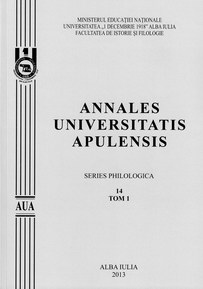La dynamique du processus de la traduction littéraire à travers les filtres décisionnels du traducteur
The Dynamics of the Literary Translation Process through a Translator’s Decision Filters
Author(s): Ana CoiugSubject(s): Language and Literature Studies
Published by: Universitatea »1 Decembrie 1918« Alba Iulia
Keywords: literary translation; reading; translator; decision; pattern
Summary/Abstract: The thoughts we are sharing in this paper have been developed from a triple chronological standpoint: as a passionate fiction reader, either in original language or in translation, as a translator and as a teacher. They have been shaped after many discussions with other translators and with some students in various fields of Languages and Literatures. The reading of a literary text by a translator is different compared to a professional literary reading and to the reading as a hobby. In this respect, the teacher in charge of the « translation course » is forming an attitude concerning an activity (the translation and its techniques), a cultural product (the text) and a complex context which includes the involved languages and cultures. The series of the operations included in the translation process cannot be called a method since there is no truth to prove when translating. Calling it a model is also unsatisfying since the model implies a comparison between an achieved work and an absolute variant of a product. In literary translation there is no absolute translation of a text, there are only variations, more or less achieved. The best term for expressing our vision of the literary translation process is pattern, without any ambition of an absolute truth. The literary translation pattern, as we imagine it, is based on the concepts of translator’s reading, decision act in translation, crossed reading, reading at a distance, proofreading – a series of operations which imply making decisions and ending with the target text. As compared to the commented translation during the translation classes, the translator’s reading is included in a larger context which involves the literary context of the production of the source text; the literary context of the target country; the cultural contexts of the two spaces; the permeability of the target literary space and the interest the source space shows in order to promote its literature. A translator’s reading is focused on linguistic contents, but it also uses intertextuality and hermeneutical connections between textual facts that a translator notices during the translation process, from a particular point of view.
Journal: Annales Universitatis Apulensis. Series Philologica
- Issue Year: 14/2013
- Issue No: 2
- Page Range: 363-374
- Page Count: 12
- Language: French

